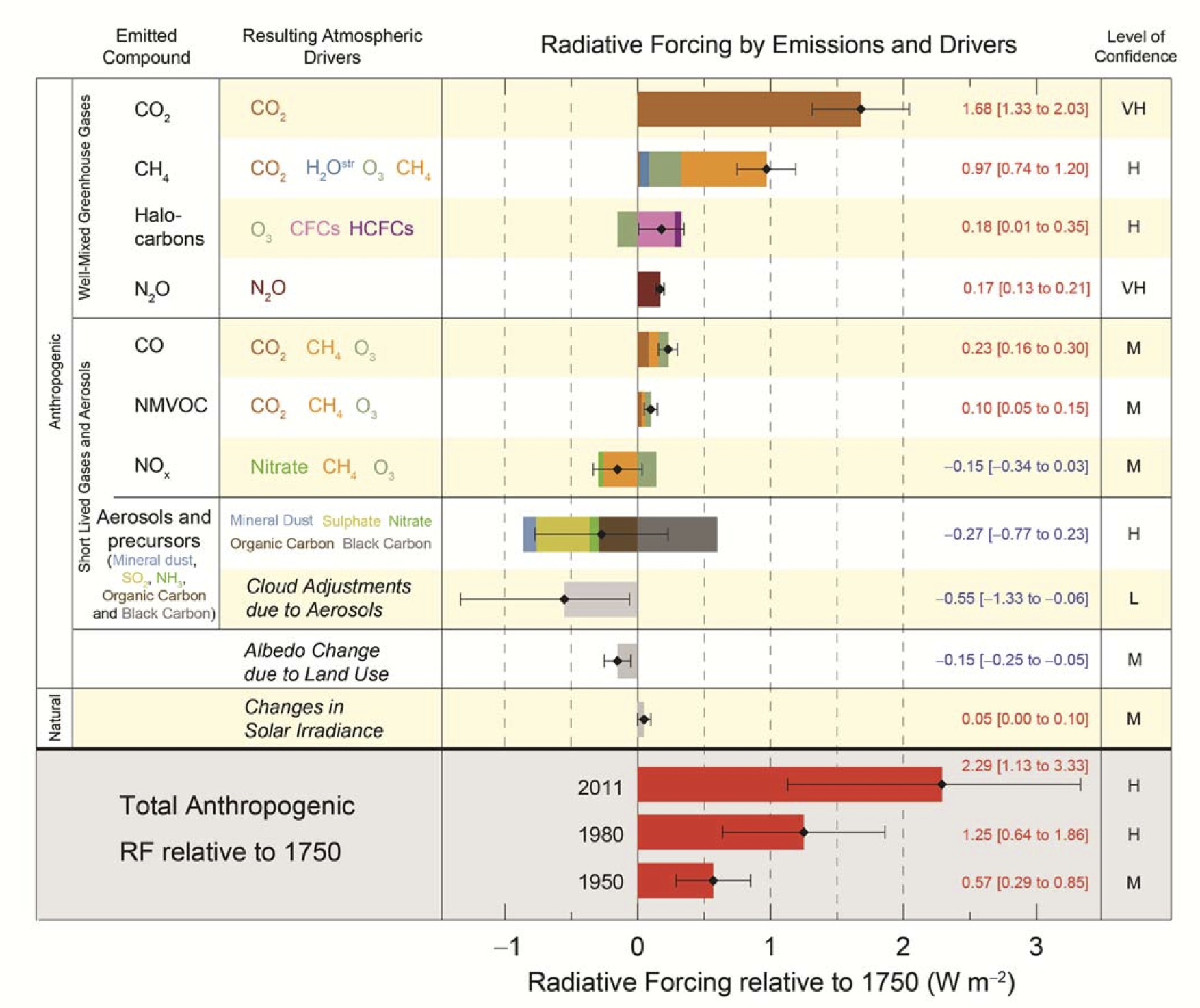Is there any lab work at all showing how a 120ppm increase in CO2 will raise temperature by 1C?
There is a GHG effect. This we know for sure, but the largest effect is at very low concentrations. That's because there is a logarithmic relationship between CO2 concentration and associated temperature. Which means that as CO2 concentration increases the incremental temperature associated with the CO2 increase diminishes. So a 120 ppm increase from 0 to 120 would have a much bigger impact (19.21 C) than a 120 ppm increase from 280 to 400 ppm (24.04 - 19.21 = 1.43 C)
View attachment 99694
View attachment 99697
Please, link to your source.
Ok.
Radiative forcing - Wikipedia
Carbon dioxide radiates within a narrow frequency spectrum. The first parts per million has the strongest effect. The more CO2 you add, the smaller the outcome. Each additional doubling has the same effect on temperature. From 0 to 280 ppm the increase is the same as from 280 to 560, and the same as from 560 to 1120, and so on. It’s like adding layers of blankets when it really cold. The first one does most of the work. The logarithmic relationship is accepted by the IPCC and is used in their models.
Guy Callendar, an English engineer, was the first person to discuss this in paper he wrote in 1938.
The Carbon Dioxide Greenhouse Effect
Forcing due to atmospheric gas[edit]
For a greenhouse gas, such as
carbon dioxide, radiative transfer codes that examine each spectral line for atmospheric conditions can be used to calculate the change ΔF as a function of changing concentration. These calculations can often be simplified into an algebraic formulation that is specific to that gas.
For instance, the simplified first-order approximation expression for
carbon dioxide is:
where
C is the CO2 concentration in parts per million by volume and
C0 is the reference concentration.
[6] The relationship between carbon dioxide and radiative forcing is
logarithmic[7] and thus increased concentrations have a progressively smaller warming effect.
A different formula applies for other greenhouse gases such as
methane and
N2O (square-root dependence) or CFCs (linear), with coefficients that can be found
e.g. in the
IPCC reports.
[8]
To convert forcing to temperature, multiple F which is in W/m^2 times 0.75 which is in degrees C per W/m^2



